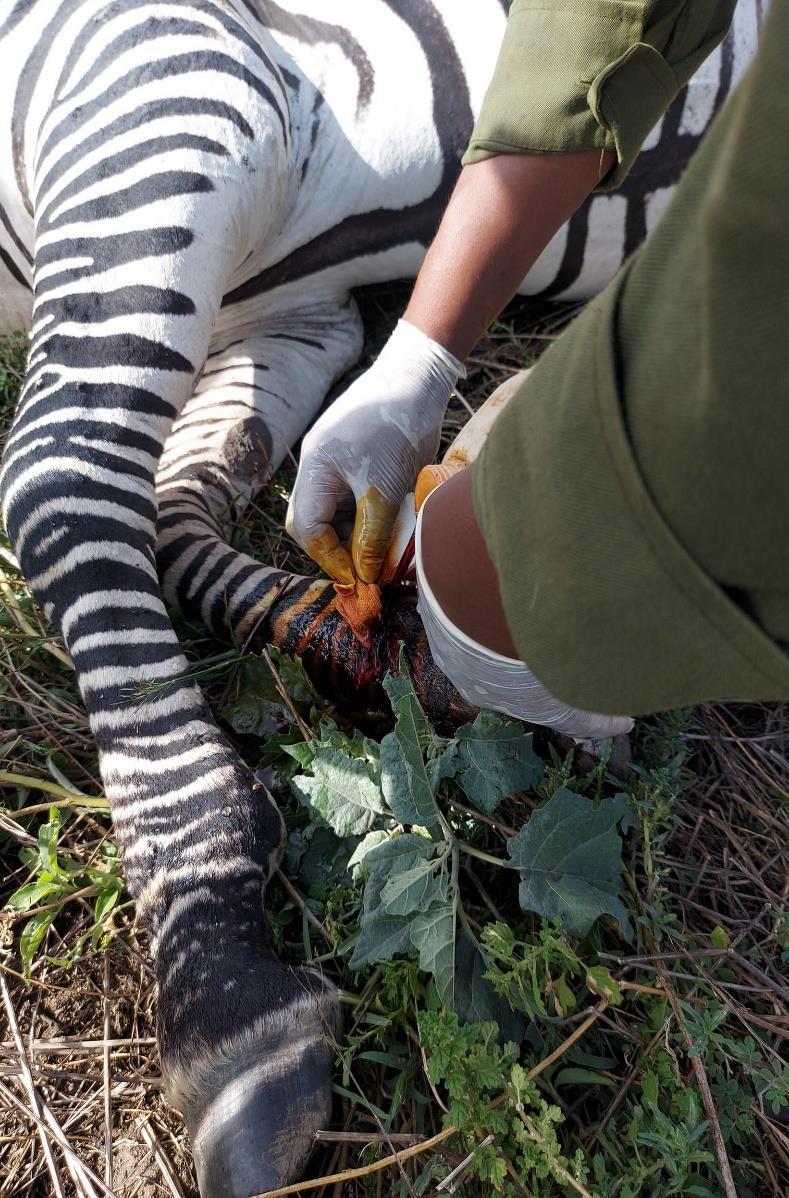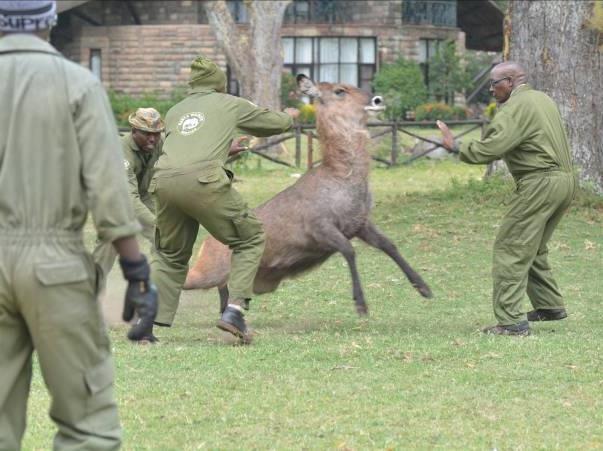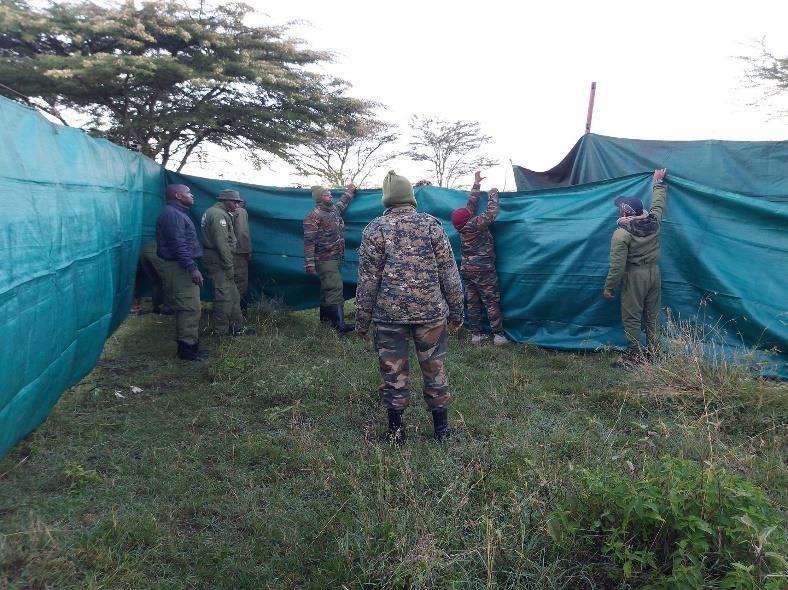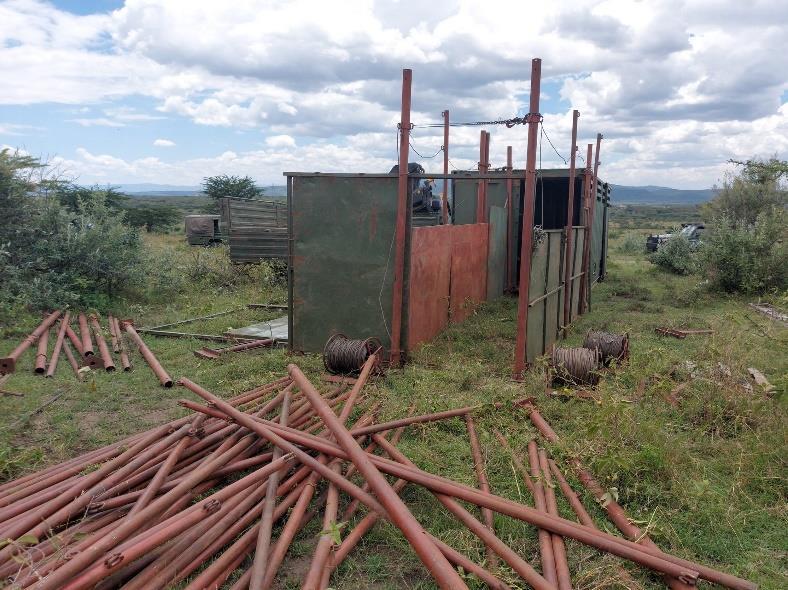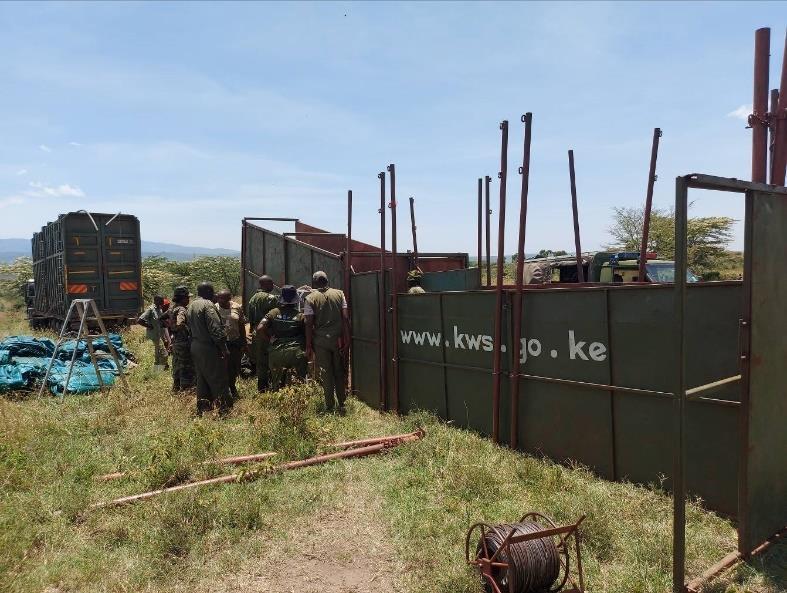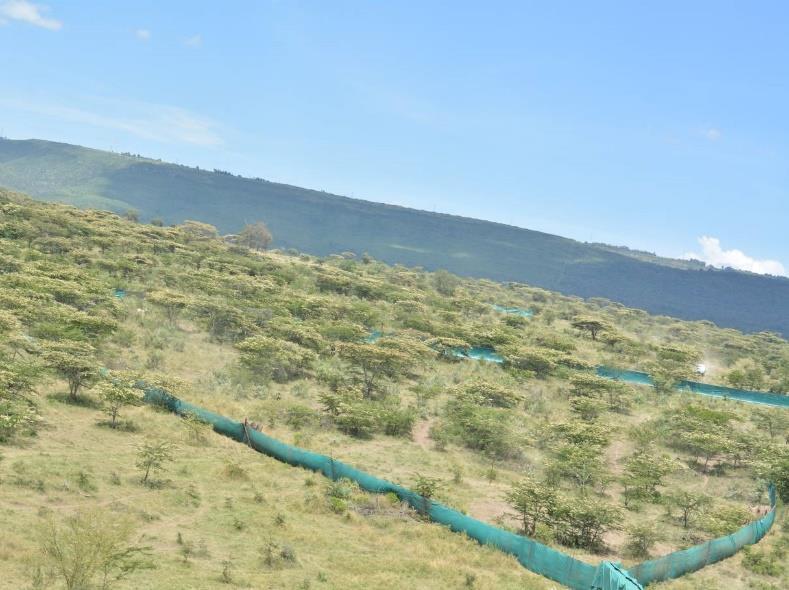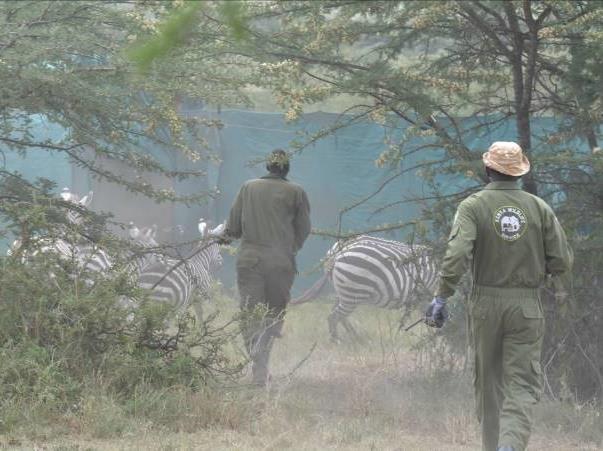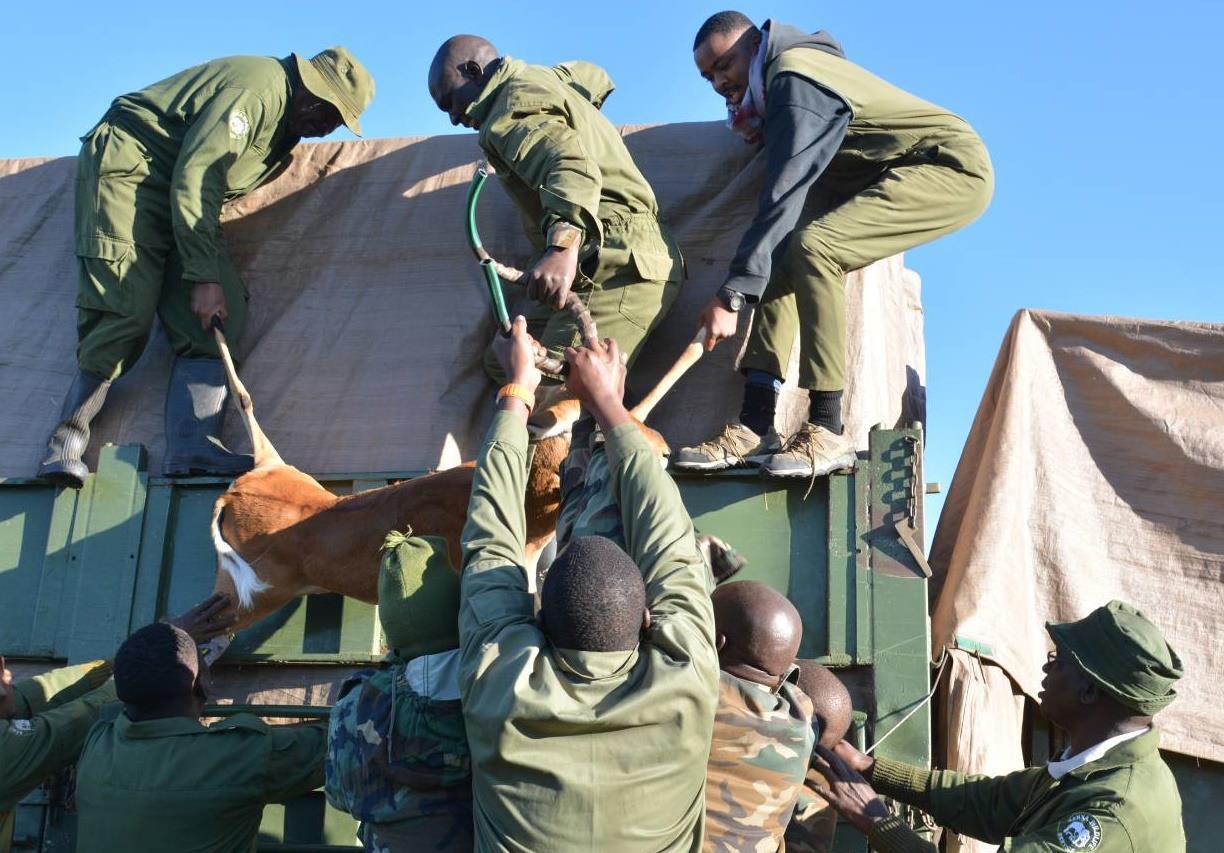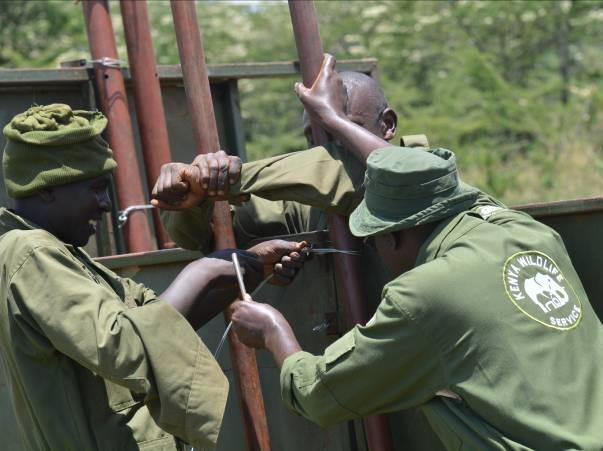
SWT/KWS RIFT VALLEY MOBILE VETERINARY UNIT
MARCH 2024



March Report by Dr.
Titus Kaitho

Many parts south, north of Lake Naivasha and generally most of the Central Rift Conservation Area during this reporting period received sporadic showers. 10 Wildlife clinical case interventions were undertaken during March. Rift Valley Vet Unit visited the following areas; Naivasha Prison, Soysambu Conservancy, Kenya Nut, Kedong ranch, Evergreen farm, Marula Estates, Kedong ranch, Green Park, Kijabe farm, Sopa lodge, Kamere beach among other areas. Other than general routine case work and security patrols, the Unit also translocated various wildlife species from Kenya Nut farm, Evergreen farm to Tundra Conservancy.
Acknowledgement
We sincerely thank Sheldrick Wildlife Trust (SWT) for support, resources & sponsorship of the Rift Valley Mobile Veterinary Unit. Chief Executive Officer SWT, Angela Sheldrick, we acknowledge your unwavering support. Kenya Wildlife Service is acknowledged for general operational & leadership support. Wildlife Research & Training Institute (WRTI) supported the activities by hosting staff at WRTI.
Case Details
11-Mar-24
Conservancy
Causes
wire on the right front leg
examination the giraffe calf had a wound on the head and a broken ossicone
Treated 11-Mar-24 Giraffe Soysambu Conservancy Natural Causes The giraffe had suffered a deep and extensive wound on the cranium
Soysambu Conservancy Snared The hyena had been snared, injured and wounded by a wire on the neck
Treated 18-Mar-24 Hyena Soysambu Conservancy Snared The hyena had been snared by a wire on the neck Successfully Treated 19-Mar-24 Zebra Lake Elementaita Postmortem The zebra carcass was lying on left lateral recumbency. The carcass looked fresh
26-Mar-24
Naivasha Snared The giraffe had been snared by a long wire on the left hind leg
Treated 28-Mar-24
Naivasha HWC The zebra had a large open wound inflicted by a sharp object on the right hind leg
Treated 28-Mar-24
Naivasha Natural Causes The zebra was suffering a suppurative painful joint on the right front leg Successfully Treated
March 2024

Case 1 – 8th March 2024
Zebra Natural Causes
Naivasha Prison
This zebra was darted using 5mg Etorphine plus 80mg Azaperone. On examination the zebra had been injured and suffered a dislocation of the right front leg at PI & PII. The joint was swollen inflamed and immobile. The dislocation was the major cause of marked lameness. The zebra was administered 250mg Flumeg, 9,000mg Biocillin injection, and 40ml Catasol by IM route. 5ml Intermectin was also given by SQ route.
The anaesthesia was reversed with 75mg of Naltrezone and the zebra given a good prognosis.


Case 2 – 11th March 2024
Giraffe
Snared
This giraffe calf was darted with 5mg Etorphine plus 40mg Azaperone.
Soysambu Conservancy
The giraffe had been snared by a wire on the right front leg. Fortunately, the wire had caused only minor bruises/lacerations on the skin. The snare was removed then the giraffe was reversed from general anaesthesia using 100mg of Naltrexone by IV route and a ¼ of the dose by IM route to avoid re-narcotization.
Prognosis of this case is good.


.
Case 3 – 11th March 2024
Giraffe Natural Causes
Soysambu Conservancy
This giraffe calf was darted using 2.5mg Etorphine plus 10mg Azaperone. The giraffe calf had a wound on the head, a broken ossicone and peeled off skin on the forehead. The wound was infected & infested with maggots. We surgically removed the peeled off skin and cleaned the wound using water and tincture of Iodine. A fly repellent was applied. The giraffe was then given 250mg Flumeg, 9,000mg Biocillin, 40ml Catasol, all by IM route, and 5ml Intermectin by SQ route We reversed the giraffe calf from general anaesthesia using 75mg of Naltrexone by IV route and a ¼ of the dose by IM route to avoid re-narcotization.
Prognosis of this case is good

Case 4 – 11th March 2024 Giraffe Natural
Causes

Soysambu Conservancy
This giraffe calf was darted using 2.5mg Etorphine plus 10mg Azaperone. On examination the giraffe had suffered severe myasis, deep and extensive gangrenous wound on the cranium which was maggot infested.
Prognosis of the case was poor. The calf was put to rest.


Case 5 – 18th March 2024
Hyena Snared Soysambu Conservancy
We used a call back station equipment to call the hyena from the burrows. This hyena was darted with 280mg Ketamine plus 6mg Medetomidine. On examination the hyena had been injured by a wire snare around the neck. We cleaned the wound using water and rinsed the same with tincture of Iodine. Alamycin fly repellent was sprayed on the wound. The hyena was given 200mg Flumeg, 6,000mg Amoxicillin and 40ml Catasol by IM route as well as 4ml Ivermectin by SQ route We reversed the hyena from anaesthesia after one hour by using 20mg of Atipamezole given by IM route. Prognosis of this case is good.

Case 6 – 18th March 2024
Hyena
Snared

Soysambu Conservancy
This hyena was also called out of the burrows using a call back station equipment then darted with 280mg Ketamine plus 6mg Medetomidine. On examination the hyena had been snared, by a wire on the neck. Fortunately, the snare had only caused minor bruises on the neck. The skin lacerations were treated by administration of a fly repellant spray (Alamycin® Aerosal) applied topically. The anaesthesia was reversed after one hour by using 20mg of Atipamizole.
Prognosis is good.


Case 7 – 19th March 2024
Zebra Post-mortem Lake Elementaita Wildlife Sanctuary
This case was reported by Warden - Lake Elementaita Wildlife Sanctuary.
External Post-mortem Findings
The zebra carcass was lying on left lateral recumbency. The carcass looked fresh as the zebra had died at around 7.30 am on 19.03.2024.
• Rigor mortis had kicked in
• The carcass head, perineum and parts of the stomach had been mauled by dogs
• The carcass had a good body condition, body condition score of 4. Body scoring scale: 1 =very poor, 2=poor, 3=fair, 4 = Good, 5=Excellent
Internal Post-mortem Findings
▪ Yellow fat – on all parts – chronic granulomatous steatitis (yellow fat disease in a female zebra)
▪ Two large tumors - haemorrhagic masses approximate weight 3kg
▪ Pulmonary thrombosis
▪ Nephrosis – Kidney capsule adhered to the cortex of the kidneys
Cause of death
The immediate cause of death of this female zebra was severe pulmonary thrombosis.

Case 8 – 26th March 2024
Giraffe Snared Marula Estates, Naivasha
This male giraffe was darted using 13mg Etorphine plus 60mg Azaperone. He ran away for a distance and an additional dart of 13mg Etorphine plus 50mg Azaperone was necessary.
The giraffe had been snared by a long wire on the left hind leg. Fortunately, the snare wire had only caused minor skin lacerations. The snare was removed and the giraffe promptly reversed from general anaesthesia by rapid administration of 200mg Naltrexone administered by IV route and a ¼ of the dose given by IM route to avoid re-narcotization. Prognosis of this case is good.

Case 9 – 28th March 2024
Zebra
Human Wildlife Conflict
This zebra was darted using 5mg Etorphine plus 80mg Azaperone. The zebra had a large open wound inflicted by a sharp object on the right hind leg. The wound was cleaned with water and tincture of Iodine. A fly repellent was applied. The zebra was also administered 250mg Flumeg, 9,000mg Biocillin, 40ml Catasol by IM route as well as 5ml Ivermectin by SQ Route.
Prognosis of this case is favourable. .

 Sanctuary Farm, Naivasha
Sanctuary Farm, Naivasha

